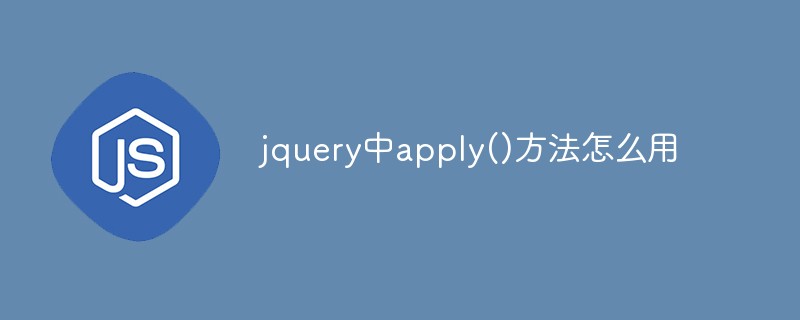 Web Front-end
Web Front-end JS Tutorial
JS Tutorial PushStack implementation principles and application examples in jQuery_jquery
PushStack implementation principles and application examples in jQuery_jquerypushStack is a very important function in the jQuery kernel. It is so important that it is frequently used in many jQuery internal functions. Under normal circumstances, although it is rarely used, mastering this function is not only helpful for understanding the operating principles of jQuery, but also facilitates us to do more advanced jQuery operations.
As the name suggests, pushStack is a push stack. As a data structure, the stack is a special linear table that can only perform insertion and deletion operations at one end. When data is pushed into the stack, it is similar to when we enter the elevator, last in, first out, as shown below:

The stack in jQuery is not actually a real stack. Instead, it attaches an attribute to the jQuery object, pointing to the previous object of the current object, and the previous element can be returned through the end method. As follows:
<span>1</span>
<span>2</span>
<span>3</span>
<script>
$('span').eq(0).css('fontSize','20px').end().fadeOut(2000);
</script>
The above code will make the font size of the first span 20px and make all spans fadaout within 2 seconds.
pushStack is an instance method of jQuery and is called through the jQuery object, such as setting the background of all divs through $().pushStack(document.getElementsByTagName('div')).css('background','blue') is blue. So what is the principle of pushStack, and why can the incoming DOM object be manipulated with css methods? Let’s first take a look at the source code of pushStack in jQuery:
pushStack: function( elems ) {
// Build a new jQuery matched element set
var ret = jQuery.merge( this.constructor(), elems );
// Add the old object onto the stack (as a reference)
ret.prevObject = this;
ret.context = this.context;
// Return the newly-formed element set
return ret;
}
//jQuery.merge
merge: function( first, second ) {
var l = second.length,
i = first.length,
j = 0;
if ( typeof l === "number" ) {
for ( ; j < l; j++ ) {
first[ i++ ] = second[ j ];
}
} else {
while ( second[j] !== undefined ) {
first[ i++ ] = second[ j++ ];
}
}
first.length = i;
return first;
}
The implementation of pushStack is relatively simple, mainly involving jQuery's static method merge. This method is used to merge objects. The design idea is to append the attributes (0 to n) of the second object on the basis of the first object. Go up, it's important to understand this. Returning to the pushStack function, first define a local variable ret to store the merged object, then store the prevObject and context attributes for this object, and finally return the merged ret object. Here are a few things to note:
1. this.constructor is jQuery’s constructor init, so this.constructor() returns a jQuery object.
2. Since the object returned by the jQuery merge function is the second function appended to the first one, ret is also a jQuery object. This can explain why the DOM objects in and out of pushStack can also be operated with CSS methods.
3. The prevObject property of the returned object points to the previous object, so you can find the previous object on the stack through this property.
 jquery实现多少秒后隐藏图片Apr 20, 2022 pm 05:33 PM
jquery实现多少秒后隐藏图片Apr 20, 2022 pm 05:33 PM实现方法:1、用“$("img").delay(毫秒数).fadeOut()”语句,delay()设置延迟秒数;2、用“setTimeout(function(){ $("img").hide(); },毫秒值);”语句,通过定时器来延迟。
 jquery怎么修改min-height样式Apr 20, 2022 pm 12:19 PM
jquery怎么修改min-height样式Apr 20, 2022 pm 12:19 PM修改方法:1、用css()设置新样式,语法“$(元素).css("min-height","新值")”;2、用attr(),通过设置style属性来添加新样式,语法“$(元素).attr("style","min-height:新值")”。
 axios与jquery的区别是什么Apr 20, 2022 pm 06:18 PM
axios与jquery的区别是什么Apr 20, 2022 pm 06:18 PM区别:1、axios是一个异步请求框架,用于封装底层的XMLHttpRequest,而jquery是一个JavaScript库,只是顺便封装了dom操作;2、axios是基于承诺对象的,可以用承诺对象中的方法,而jquery不基于承诺对象。
 jquery怎么在body中增加元素Apr 22, 2022 am 11:13 AM
jquery怎么在body中增加元素Apr 22, 2022 am 11:13 AM增加元素的方法:1、用append(),语法“$("body").append(新元素)”,可向body内部的末尾处增加元素;2、用prepend(),语法“$("body").prepend(新元素)”,可向body内部的开始处增加元素。
 jquery中apply()方法怎么用Apr 24, 2022 pm 05:35 PM
jquery中apply()方法怎么用Apr 24, 2022 pm 05:35 PM在jquery中,apply()方法用于改变this指向,使用另一个对象替换当前对象,是应用某一对象的一个方法,语法为“apply(thisobj,[argarray])”;参数argarray表示的是以数组的形式进行传递。
 jquery怎么删除div内所有子元素Apr 21, 2022 pm 07:08 PM
jquery怎么删除div内所有子元素Apr 21, 2022 pm 07:08 PM删除方法:1、用empty(),语法“$("div").empty();”,可删除所有子节点和内容;2、用children()和remove(),语法“$("div").children().remove();”,只删除子元素,不删除内容。
 jquery怎么去掉只读属性Apr 20, 2022 pm 07:55 PM
jquery怎么去掉只读属性Apr 20, 2022 pm 07:55 PM去掉方法:1、用“$(selector).removeAttr("readonly")”语句删除readonly属性;2、用“$(selector).attr("readonly",false)”将readonly属性的值设置为false。
 jquery on()有几个参数Apr 21, 2022 am 11:29 AM
jquery on()有几个参数Apr 21, 2022 am 11:29 AMon()方法有4个参数:1、第一个参数不可省略,规定要从被选元素添加的一个或多个事件或命名空间;2、第二个参数可省略,规定元素的事件处理程序;3、第三个参数可省略,规定传递到函数的额外数据;4、第四个参数可省略,规定当事件发生时运行的函数。


Hot AI Tools

Undresser.AI Undress
AI-powered app for creating realistic nude photos

AI Clothes Remover
Online AI tool for removing clothes from photos.

Undress AI Tool
Undress images for free

Clothoff.io
AI clothes remover

AI Hentai Generator
Generate AI Hentai for free.

Hot Article

Hot Tools

SublimeText3 Chinese version
Chinese version, very easy to use

SublimeText3 Mac version
God-level code editing software (SublimeText3)

MantisBT
Mantis is an easy-to-deploy web-based defect tracking tool designed to aid in product defect tracking. It requires PHP, MySQL and a web server. Check out our demo and hosting services.

Dreamweaver CS6
Visual web development tools

DVWA
Damn Vulnerable Web App (DVWA) is a PHP/MySQL web application that is very vulnerable. Its main goals are to be an aid for security professionals to test their skills and tools in a legal environment, to help web developers better understand the process of securing web applications, and to help teachers/students teach/learn in a classroom environment Web application security. The goal of DVWA is to practice some of the most common web vulnerabilities through a simple and straightforward interface, with varying degrees of difficulty. Please note that this software





